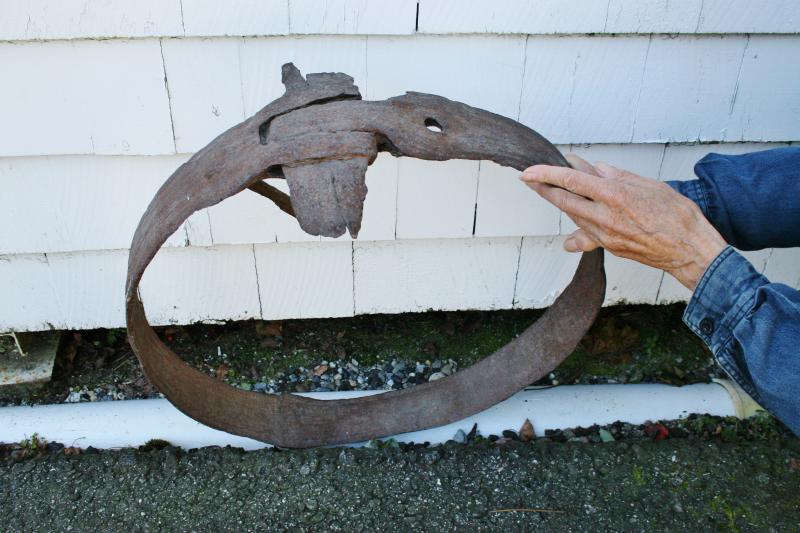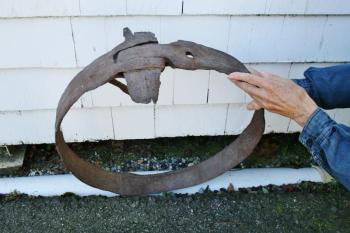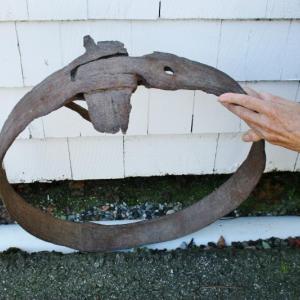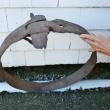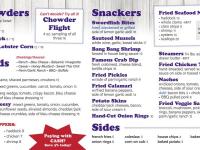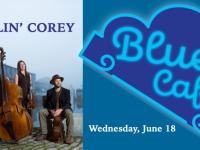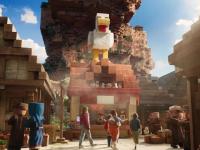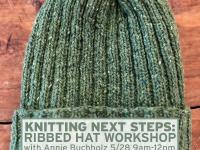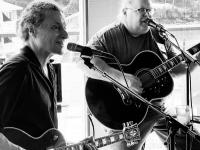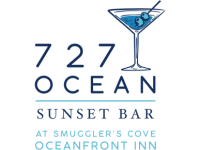What remains of the 1813 Boxer and Enterprise Sea Fight, Part II
Last time I wrote about a few relics that were reputedly linked to the British brig Boxer, including a flagpole located on Damariscove Island in the 1800s. During the War of 1812, the Boxer fought with the American brig Enterprise on the afternoon of September 5, 1813 between Monhegan and Damariscove. The Boxer lost, her main topmast and associated parts shot away, and she sustained other damage to her hull. The brigs were patched and proceeded to Portland, with the Boxer pumping all the way.
The mastband
When I got involved with the historical society in 1985, one artifact on display in the museum was a mastband reputed to have come from the Boxer. The idea was that, like the flagpole/mast in the last article, it had floated ashore onto Damariscove on a mast after the battle, which took place a few miles east of the island. It made sense, just as had the mast/flagpole floating ashore.
Southport men save the mastband
Founding society trustee and Cecil Pierce of Southport told me how the band came to be in the museum. Fellow Southporter and friend Herbert Decker (1894-1966), a merchant mariner in World War I and vessel engineer later, had acquired it in the early to mid-1900s.
Cecil said Herbert knew someone who'd been stationed on Damariscove in the early 1900s or World War I era, maybe Southporter Alpheus Snowman. He was one of the men in the first crew of lifesavers at the lifesaving station after it was built.
While on patrols circumventing the island, Alpheus (if him) repeatedly saw a very old, rusted mastband on the east beach at the island's isthmus. He told Herbert about it, who brought it ashore eventually.
Stuart Thompson of Southport bought his friend Herbert Decker's boathouse and its contents at Deckers Cove in the early 1960s. According to Stuart's widow, Jean Thompson, the mastband was among the gear and relics hanging in the boathouse. Cecil was instrumental in persuading his friend Stuart Thompson to turn the mastband over to the museum.
The obvious extreme age of the mastband led the three men, and maybe others I'm unaware of, to believe it had once been on the Boxer. They knew she'd been damaged, and the band was of such ancient design that their minds were led to that famous vessel.
The mastband is nearly 21 inches in diameter, wrought iron, very rusted, with one four-inch spike protruding inward, one of two spikes once imbedded in the mast. It's so corroded that its features are hard to identify, at least to the untrained eye.
Mickey Martelle's English connection
In 1992 I set out to do research for an article on the battle and the mastband, hoping to substantiate the story. As I mentioned last time in discussing the Damariscove flagpole reputed to be from the Boxer, my friend Mickey Martelle, model maker and nautical researcher, contacted a Greenwich, England museum acquaintance.
Mickey hoped to gather definitive details for me concerning the Boxer's particulars, with special attention to the flagpole and the mastband. I was hoping for plans, but that was naive of me. The second-best thing was Steel's book from that period entitled, “Elements and Practices of Rigging, Seamanship, and Naval Tactics.”
According to Steel, referenced by the Greenwich museum men, the main mast of such a brig, which was about 200 tons and 84 feet long, was 19 inches in diameter, with the topmast 10 inches.
We knew the Boxer's topmast, associated parts, and rigging were shot away and then cut away. Dragging over the side, the mass of rigging and topmast parts would act like a sea anchor, impeding the brig. So cutting it loose was necessary.
But given the wide discrepancy in the mastband's diameter and that of the topmast, Mickey believed the mastband couldn't have come from the Boxer. He wrote me a long explanatory letter in 1992, including the identical opinion from the Greenwich museum.
Cecil Pierce
Cecil Pierce knew all about my project to confirm the Boxer story. When I showed him the letters that year, he too became convinced the mastband was not the Boxer's. A skilled machinist among other things, he had a high regard for a well-designed and well-made device, such as the mastband. He appreciated the qualities of all workable metals, with wrought iron high on his list.
He taught me how to recognize wrought iron that predates the 1860s. He still valued the mastband for all its qualities, but he was disappointed about the Boxer angle, so I put off writing an article. Also, I often watch and wait, hoping for more information on topics. Things sat there and the years rolled by.
Next time: Sailmaker Nat Wilson's comments on the mastband and his diagram.
Event Date
Address
United States

